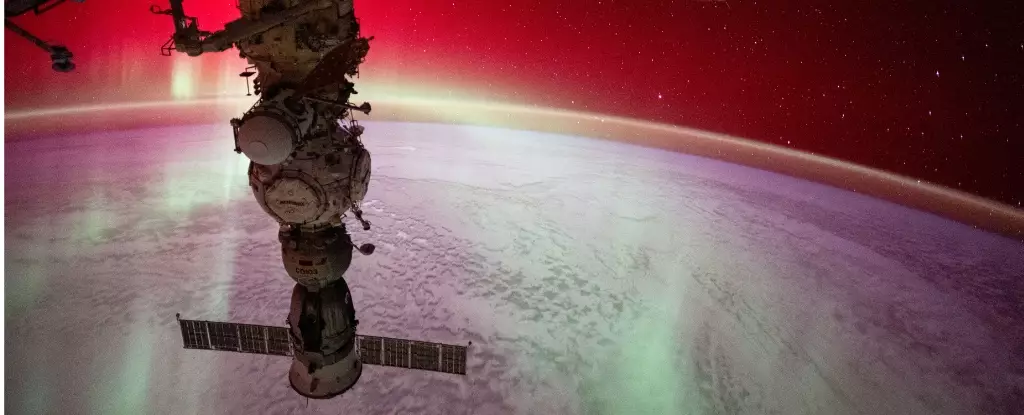Each year, the International Space Station (ISS) serves as a magnificent window to our planet, facilitating the capture of some of the most breathtaking photography imaginable. The astronauts aboard are not merely passengers; many are adept engineers and scientists whose technical skills are instrumental in documenting the stunning visuals that space provides. While their training equips them to handle cameras proficiently, what truly sets them apart is the unparalleled perspective they gain from their orbit—an astonishing view that shifts dramatically every 90 minutes as they circle Earth. This unique vantage point allows them to capture everything from the brilliance of the aurora borealis to the stark beauty of snow-capped volcanoes and zigzagging rivers.
In 2024, astronauts have once again delivered an impressive portfolio of images that convey both the beauty and fragility of our world. Among these highlights is the captivating Comet Tsuchinshan-ATLAS, affectionately nicknamed Comet A3, which graced their celestial camera lenses. Furthermore, the astronauts enjoyed an extraordinary view of the northern lights, with waves of color illuminating the night sky from their unique vantage point. One of the standout moments in 2024 was the total eclipse, an event that allowed them to witness the moon casting its shadow across the continental U.S.—a visual spectacle that few have the opportunity to experience.
Even seemingly mundane natural phenomena reveal their splendor when viewed from space. Astronauts have captured enthralling photographs of sunrises and sunsets, showcasing a stunning palette that of oranges, blues, and purples—it’s as if they are witnessing a painting in motion. Unique atmospheric phenomena like noctilucent clouds also come alive in their photographs, revealing the mysterious beauty of ice-crystal formations high in the Earth’s atmosphere.
However, the scenarios that astronauts document aren’t always peaceful or comforting. Their cameras also capture the harsh realities of Earth, including the expansive devastation caused by wildfires and the dramatic patterns of hurricanes from above. The beauty of a storm, such as Hurricanes Helene and Milton, can be awe-inspiring—their swirling forms ranging hundreds of miles across look strikingly mesmerizing, albeit frightening. Disturbingly, astronauts can sometimes catch flashes of lightning tearing through thick cloud layers, highlighting nature’s raw power.
Additionally, one striking characteristic of viewing the Earth from above is the difficulty in discerning human-created borders. This obliteration of boundaries underscores an emotional recognition of our planet’s unity and interconnectedness, as astronauts navigate the vast mighty deserts where countries like Libya, Sudan, and Egypt converge.
As astronauts continue their journeys above, many describe profound shifts in perspective often referred to as the “Overview Effect.” This transformative experience can evoke feelings of awe, interconnectedness, and a chilling awareness of Earth’s fragility. For many, this view leads to a deeper contemplation of what it means to coexist. NASA astronaut Suni Williams articulated this sentiment perfectly, noting how it becomes unfathomable to imagine continued discord among humankind when gazing down from such heights.
The ISS also serves as a fascinating platform for spaceflight advancements and technological preparations for future missions. In July 2024, Williams and her crewmate Butch Wilmore made history as the first astronauts to fly aboard Boeing’s Starliner, a mission that didn’t go entirely as planned. While issues with the spacecraft returned them to the station rather than Earth, Williams remarked about her love for her cosmic workplace, revealing a profound affection for her journey despite the setbacks.
The ISS is nearing the end of its operational life, with plans for decommissioning by 2030. NASA has called upon SpaceX to devise a strategy for safely deorbiting the station, ultimately culminating in its descent into the Pacific Ocean. Still, although the physical structure of the ISS may vanish, its legacy will undoubtedly linger in the annals of space exploration. The incredible photographs that astronauts have taken serve as permanent reminders of the beauty we have witnessed, providing a legacy that extends beyond the confines of the station itself and into the soul of humanity.
Photography from the ISS offers not only surreal imagery but also evokes existential reflection. As astronauts document their journeys, they invite us to contemplate our place in the universe, emphasizing the beauty and vulnerability of our shared home.

